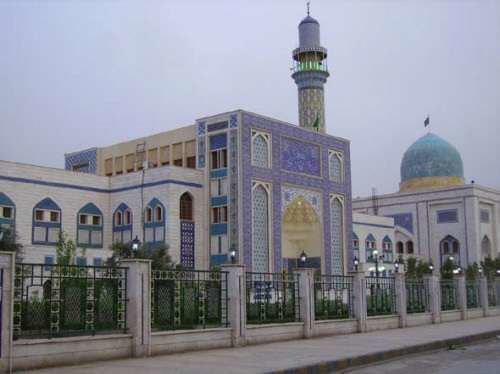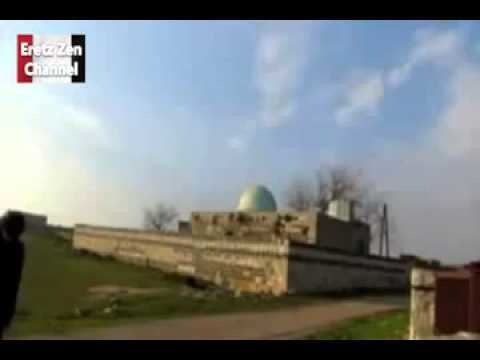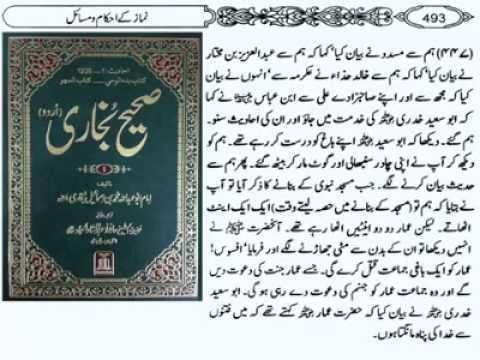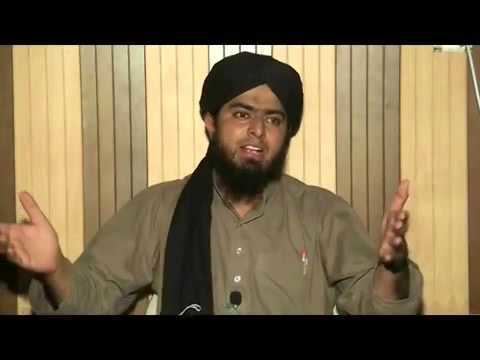Name Ammar Yasir | Coordinates 35°56'32"N 39°1'46"E | |
 | ||
Similar People Salman the Persian, Sumayyah bint Khayyat, Malik al‑Ashtar, 'Amr ibn al‑'As, Sa`d ibn Abi Waqqas | ||
Syed zafar abbas biography of ammar ibn yasir
ʻAmmār ibn Yāsir ibn ʿĀmir ibn Mālik Abū al-Yaqzān (Arabic: عمار بن یاسر) was one of the Muhajirun in the history of Islam and, for his dedicated devotion to Islam's cause, is considered to be one of the most loyal and beloved companions of Muhammad and ‘Ali; thus, he occupies a position of the highest prominence in Islam. Historically, Ammar ibn Yasir is the first Muslim to build a mosque. He is also referred to by Shia Muslims as one of the Four Companions. Ammar's ultimate fate was unique than the fate of the rest of Mohammad's companions, for his martyrdom in the Battle of Siffin decisively distinguished the righteous group from the sinful one in the First Fitna.
Contents
- Syed zafar abbas biography of ammar ibn yasir
- Zaid ibn harithah and ammar ibn yasir ra mufti menk malaysia ramadan 2014 1435
- Before conversion to Islam
- After conversion to Islam
- Battles under Muhammad
- Role after Muhammads death
- Battle of the Camel
- Martyrdom in the Battle of Siffin
- Legacy
- Shrine desecration
- References

Zaid ibn harithah and ammar ibn yasir ra mufti menk malaysia ramadan 2014 1435
Before conversion to Islam

ʻAmmar belonged to Banu Makhzum tribe in Hijaz (current-day Saudi Arabia). He was born in the Year of the Elephant, which was the same year as Muhammad's birth, in Mecca and was one of the intermediaries in the Muhammad's marriage to Khadijah bint Khuwaylid. His father, Yasir ibn Amir, was from the tribe of Qahtan in Yemen and migrated to Mecca and settled down there by marrying Sumayyah bint Khayyat, a slave woman; Ammar and his parents, Yasir and Sumayyah, were slaves to Abu Huzaifa, but upon his death, Abu Jahl -who became later one of Islam's most brutal enemies and the infamous torturer of Ammar and his parents- took them over as his slaves. Ammar's trust in and knowledge of Muhammad's credibility, even before his prophethood, encouraged him to follow Muhammad's prophetic visions as one of the earliest converts.
After conversion to Islam

ʻAmmar converted to Islam in 614 or 615 ACE under the direct influence of Abu Bakr. This coincided with the period when the Quraysh were persecuting the lower-class Muslims. As Ammar later told his grandson: "I met Suhayb ibn Sinan at the door of the house of Al-Arqam while the Messenger of Allah was in it. I asked him, 'What do you want?' He said to me, 'What do you want?' I answered, 'I want to go to Muhammad and listen to what he says.' He said, 'That is what I want.' We entered and he presented Islam to us and we became Muslim. Then we spent the day until evening and went out concealing ourselves." Ammar's father, mother and brother also became Muslims, though not at Abu Bakr's invitation.

When Quraysh knew of the conversion of Yasir's family to Islam, they were among the "victims who were tortured at Makka to make them recant." The Makhzum clan used to take out Ammar ibn Yasir with his father and mother in the heat of the day and expose them to the excessively-hot environment of Mecca and torture them in the scorches of the open fire, and Muhammad used to pass by them and say, "Patience, O family of Yasir! Your meeting-place will be Paradise" and "O fire! Be cool and harmless for ‘Ammar in the same manner in which you became cool and harmless for Ibrahim;” consequently, Ammar had scars on his body from the torture for the rest of his life.

Ammar was tortured "until he did not know what he was saying," as was his friend Suhayb; in that state, he eventually maligned Muhammad and spoke well of the pagan gods. Afterwards he went to Muhammad and confessed his recantation. Muhammad asked, "How do you find your heart?" When Ammar replied that he was still a Muslim in his heart, Muhammad said all was well. A verse of the Qur'an, "someone forced to do it whose heart remains at rest in its faith" (16:106), refers to Ammar. Ammar's mother was murdered by Abu Jahl for her refusal to abandon Islam: she is considered the first Muslim martyr. The opening verses of Surat Al-Ankabut (chapter 29: The Spider) were revealed in response to this tragic event.

To escape the torture of the Meccans at the time, it is reportedly alleged that Ammar went to Abyssinia in 616, but Ibn Ishaq doubts this.
Battles under Muhammad

He was one of the few warriors who participated in the first major battle in Islam, the Battle of Badr. Typically, Muhammad's elite forces usually included the closest companions of his, namely Ali, Hamza ibn Abdul Muttalib, Mus`ab ibn `Umair, Az-Zubair bin Al-'Awwam, 'Ammar ibn Yasir, Abu Dharr al-Ghifari, Abu Bakr and Umar. Of noteworthy mention, because of the austere nature of the Muslims' living conditions at the time, they brought only some camels and few horses, meaning that they either had to walk or fit three to four men per camel; nonetheless, despite the harsh conditions that the sahabah had to contend with, Ammar was highly renowned and respected for his devout dedication to all the arduous battles with the Muslims even after Muhammad's death.

Besides his major involvement in Islam's military campaigns, this incident in Muhammad's life proved to be of most importance -historically- to Muslims: while ʻAmmār was participating in building The Prophet's Mosque in Medina, (quoting a hadith) "[and he] came in when they had overloaded him with bricks saying, 'They are killing me. They load me with burdens they can't carry themselves.' Umm Salama the prophet's wife said: I saw the apostle run his hand through is hair--for he was a curly-haired man--and say 'Alas Ibn Sumayya! It is not they who will kill you but a wicked band of men.'...Now he had a stick in his hand and the apostle was angry and said, 'What is wrong between them and ʻAmmār? He invites them to Paradise while they invite him to hell.'" These reports, viewed as valid by both Sunnis and Shi'is, would later be important during the issue of succession and particularly in interpreting ʻAmmār's death at the Battle of Siffin.
Role after Muhammad's death
After the death of Muhammad in 632 CE, ʻAmmar refused to give Bay'ah (allegiance) to Abu Bakr, he instead followed Ali ibn Abi Talib whom he believed to be the legitimate successor of Muhammad and the only one whom Muhammad had appointed as his successor.
Under ʻUmar, he became governor of Kufa, however he was soon removed from power by Umar; on one account, the reasons behind his dismissal were not -officially & completely- known. On another account, however, Umar dismissed Ammar to avoid unrest in Kufa (because of unfair complaints brought against Ammar by some of his political enemies).
Under the caliphate of Uthman ibn Affan, Ammar eventually became one of the major & most active rebels against Uthman (and his role in the rebellions culminated in the First Fitna); although the details of their hostilities toward each other are factually debatable.
Battle of the Camel
Prior to the events of the Battle of the Camel, a shura was set up in an attempt to decide a successor after ʿUthmān's death; at this meeting, attendees were not in agreement regarding whether retaliation for ʿUthmān's murder was necessary or not. A report of ʻAlqama b. Waqqas al-Laythi of Kinana indicates that ʻAmmār said that they should not seek revenge. Madelung interprets ʻAmmār's behavior at this meeting indicating his desire to keep Talha from gaining power because Talha was in favor of seeking retaliation. ʻAmmār would not have wanted this since "he had been the most active in inciting the rebels to action." As the battle was developing, ʻAmmār continued to show his support for ʿAlī in multiple ways. ʿAlī first sent him along with al-Hasan to Kufa in order to try to rally the Kufans to help during the upcoming battle. According to one report recorded by al-Tabari, ʻAmmār was questioned upon arrival for participating in ʿUthmān's murder; however, he continued to try to convince the governor, Abu Musa, to take a stance instead of remaining impartial in the conflict. Al-Tabari reports how Abu Musa had encouraged the Kufans to remain neutral because he did not want to participate in inter-Muslim fighting, and he also believed that the Muslim community still owed their allegiance to ʿUthmān because no new successor had been named. An additional transmission of the same event does not mention ʻAmmār's actions against ʿUthmān and instead focuses on his intentions to sway Abu Musa into action. During the actual battle, ʻAmmār fought on ʿAlī's side. Al-Tabari includes in his history an account in which al-Zubayr is told that ʻAmmār is fighting alongside ʿAlī, and this knowledge causes al-Zubayr to be fearful because he had been with Muhammad and ʻAmmār when Muhammad had told ʻAmmār that he would be killed by "a wicked band of men". Al-Tabari again includes multiple reports of the same event, which in this case is a moment during the battle in which ʻAmmār and al-Zubayr confront each other. In both accounts ʻAmmār approaches al-Zubayr to attack him, when al-Zubayr speaks. In the report from 'Umar b. Shabbah, al-Zubayr asks ʻAmmār, "Do you want to kill me?" whereas in that from 'Amir b. Hafs, al-Zubayr asks, "Are you going to kill me, Abu al Yaqzan?" In both reports, ʻAmmār's response is negative. At the end of the battle, which is successful for ʿAlī's side, ʿAlī orders ʻAmmār and Muhammad ibn Abi Bakr remove Aisha from her camel and bring her to 'Abdallah ibn Khalaf al-Khuza I's home in Basrah; because Al-Tabari repeatedly cites multiple reports from different transmitters, such variations in the consistency of the incidents' details -at that time- renders the reported nature of the consequential meeting of ʻAmmār and ʻA'ishah unclear: for one account displays ʻA'ishah as hostile towards ʻAmmār, whereas another later report describes the two as being on much more amicable terms.
Martyrdom in the Battle of Siffin
While strategising about how to defeat Muawiyah I's forces, ʿAlī gathered together a group of the Islamic ruling elite that included ʻAmmār, Hashim ibn Utbah, and Qays ibn Sa'd who, collectively, encouraged ʿAlī to wage jihad against who they considered to be in the wrong early and preemptively. Malik al-Ashtar also shared this opinion (albeit in a different incident). Later in the battle, ʻAmmār's name was brought up during an attempt to negotiate a truce between ʿAlī, represented by Shabath ibn Rib'i, and Muʿāwiya. Shabath is reported to have asked Muʿāwiya, "Would it make you happy, O Muʿāwiya, if you were given power over ʻAmmār, to kill him?" Muʿāwiya's response was, "Why should I not? But, by God, if I were given power over Ibn Sumayya, I would not kill him in revenge for ʿUthmān [only] but for Natil the mawla of ʿUthmān." Shabath's response was defensive and protective of ʻAmmār. In the Battle at Siffin in Al-Sham, ʿAlī placed ʻAmmār in charge of the Kufan infantry, and on the third day of fighting he tries to inspire his forces to victory by reminding them of the impiety of Muʿāwiya and his troops. Eventually, ʻAmmār was martyred in the battle by the forces of Muʿāwiya ibn Abī Sufyān in 657.
While reports vary as to Ammar's exact age, most place him at ninety years or older. Madelung puts him at over 90 years old; whereas Hasson states he was somewhere between 90 and 94. According to one report Tabari provides, ʻAbdallah b. Amr questions his father, ʻAmr b.al-As, about killing ʻAmmār. ʻAbdallah references the hadith in which Muhammad tells ʻAmmār that the "usurping party" will kill him. ʻAmr brings this concern to Muʿāwiya whose response is "Was it we who killed ʻAmmār? It was only those who brought him here."Ali ibn abi Talib is said to have responded that if he killed Ammar then Muhammad is the one who killed Hamza ibn Abdul-Muttalib.
Legacy
Mohammad willed 'Ammar ibn Yasir as one of the four Sahabas whose guidance should be heeded by Muslims.
When Ammar 'died, Muʿāwiya referred to him as "one of ʿAlī's two right hands" with the other being Malik al-Ashtar. Madelung quotes Al-Tabari by reporting what Muʿāwiya said to his followers after killing Imam Ali's other loyal companion, Malik al-Ashtar: "Ali b. Abi Talib had two right hands. One of them was cut at Siffin', meaning ʻAmmār b. Yasir, 'and the other today', meaning al-Ashtar". Despite Muʿāwiya's provocations, ʻAli ibn Abi Talib, the Caliph at the time, highly valued the support of 'Ammar ibn Yasir and Malik al-Ashtar nonetheless. ʻAli mourned 'Ammar's loss deeply. In the 20th century, former Palestinian leader, Yasser Arafat, was nicknamed "Abu Ammar" after Ammar ibn Yasser.
ʻAmmar's shrine, prior to its destruction, was frequently visited and paid tribute to by Muslims.
Shrine desecration
On March 11, 2013 Al-Qaeda-linked Nusra Front was blamed for the bombing and damage to the shrine of Ammar ibn Yasir located in Raqqa, Syria. The terrorist group al-Nursa, an al-Qaeda linked group, and other Salafi/Wahabi rebels are blamed for the sacrilegious act. On March 13, 2013, a group of Syrian rebels claimed responsibility for the destruction of Ammar's shrine. This attack along with the destruction of Hujr ibn Adi's shrine, Syeda Zaynab bint Ali's shrine, and Syeda Ruqayya bint Husain ibn Ali's shrine have been correlated to the Wahabbi movement.
The destruction of ʻAmmar's shrine was condemned by Muslims and sparked outrage in various parts of the Muslim world.
